Uttam Kumar
Born Name : Arun Kumar Chattopadhyay

Born : 03 September 1926
Place : Calcutta, Bengal, British India
(now West Bengal, India)
Died : 24 July 1980 (aged 53)
Bhowanipur, West Bengal, India
Nationality : Indian
Other names : Mahanayak
Iconic Actor, Indian Film Industry
Alma mater :
Goenka College of Commerce
and Business Administration
Occupation(s) :
Actor : Producer : Director
Years active : 1948–1980
Works : Filmography
Spouse(s) :
Gauri Chatterjee (1948–1963)
Supriya Devi (1963–1980; his death)
Cinematic Legend, Iconic Actor, Indian Film.
Children : 01
Son : Gautam Chatterjee (7 September 1950–2 May 2005)
Relatives :
Brother : Tarun Kumar Chatterjee
Grandson : Gourab Chatterjee
Awards :
Padmashri
About
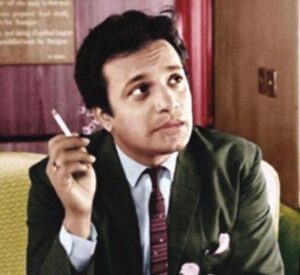
Uttam Kumar, born Arun Kumar Chattopadhyay (3 September 1926 – 24 July 1980), extensively known as the “Mahanayak” (incredible actor), turned into a multifaceted pressure in Indian cinema. His career, spanning over three a long time from the past due 1940s to 1980, encompassed performing, generating, directing, writing, composing, and playback making a song, with a number one recognition on Bengali cinema.
Starring in over two hundred movies, which include memorable works like Agni Pariksha, Harano Sur and Nayak, Kumar showcased his flexible expertise. Past performing, he took on roles as a manufacturer and director, contributing to movies which include Sudhu Ekti Bochor, Bon Palashir Padabali, and Kalankini Kankabati. He even displayed his musical abilities via composing for several of his cinematic ventures.
Uttam Kumar’s effect on Bengali cinema is profound, organising him as considered one of its maximum a success and influential actors. His accolades encompass the country wide film Award for great Actor for Antony Firingee (1967) and Chiriyakhana (1967), along with the BFJA fine Actor Award and the Filmfare Award for fine Actor. The Mahanayak Uttam Kumar metro station in Tollygunge and the Mahanayak Samman Award from the government of West Bengal stand as enduring tributes to his awesome legacy.
Early Life
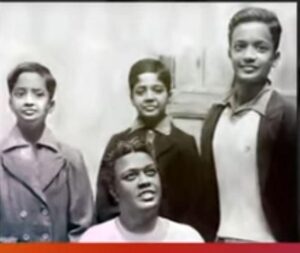
Uttam Kumar’s early life was marked by his passion for theatre and cinema. He was born as Arun Kumar Chattopadhyay on September
3, 1926, into a lower middle-class family in Ahiri Tola, North Kolkata. He had two younger brothers named Barun Kumar and Tarun Kumar, as well as a younger sister named Putul, who passed away before she should have. In Kolkata’s Metro Cinema Hall, his father worked as a film operator.
He was admitted to Chakraberia High School and later entered South Suburban School (Main) where he passed matriculation. While in school, he found a theatre group called “Lunar Club”. He made his stage debut at the age of five in Rabindranath Tagore’s Mukut and won a medal for his role in the play. Later he again won a medal for Gayasur play.
Conjugal Life
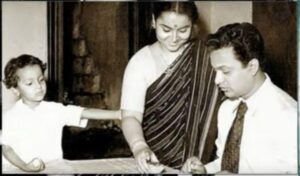
Uttam Kumar’s conjugal life was not very stable or happy. He married Gauri Chatterjee in 1948, when he was 22 years old. They had a son named Tarun Kumar, who also became an actor. However, their marriage soon fell apart due to various reasons, such as Uttam’s affair with actress Supriya Devi, Gauri’s mental illness, and Uttam’s busy career. They divorced in 1963 and Gauri died in 19742
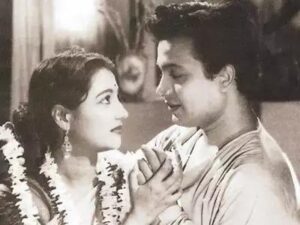
Uttam Kumar then married Supriya Devi in 1963, when he was 37 years old. She was a popular actress and singer who had worked with him in several films. They had a daughter named Sharmila Kumar Chatterjee, who is also an actress. Their marriage lasted until Uttam’s death in 1980. Supriya Devi continued to act after his demise and received the Padma Shri award in 2009 for her contribution to Indian cinema.
Career

After initial struggles, Kumar entered the movie industry in 1947. His debut in “Mayadore” went unreleased. In 1948’s “Drishtidan,” the use of his start name Arun Kumar Chatterjee, he performed a toddler artist. The subsequent yr, adopting the call Uttam Chatterj
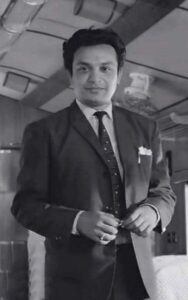
ee, he starred as a hero in “Kamona.” He briefly modified his name to Arup Kumar.
In 1950’s “Maryada,” Kumar synchronized his first track. The shift to the call Uttam Kumar passed off within the 1951 movie “Sahajatri,” advised by Pahari Sanyal. This marked the start of Hemanta Mukherjee singing for him. Despite early setbacks with almost seven flop movies, incomes him the nickname “Flop master wellknown,” Kumar continued. Disheartened, he considered leaving the enterprise, oncurrently working at the Port believe.
Initial success and breakthrough (1952 – 1954)
In 1952, Kumar secured a lead function in M.P production’s “Basu Poribar,” directed through Nirmal Dey. The film marked his first flavor of fulfillment, becoming a superhit and incomes praise. Stimulated through this triumph, he resigned from his activity on the Port believe to pursue a complete-time career in films.
The subsequent yr saw him taking part with the identical studio and director for the comedy movie “Sharey Chuattor.” This undertaking marked his initial pairing with Suchitra Sen and turned into a blockbuster hit.
Uttam Kumar’s step forward came in 1954 with Agradoot’s “Agnipariksha.” This film not handiest created a milestone in Bengali Cinema but also set a trend at the Bengal box workplace.
Become star and ruled (1955 – 1965)
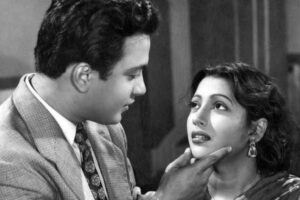
In 1955, Kumar starred inside the musical blockbuster “Shapmochon,” catapulting him to stardom. His collaboration with Hemanta Mukherjee became iconic, forming the most famous singer-actor duo.
In the course of the identical year, he showcased versatility in movies like “Sabar Uparey” and “Hrad,” portraying a mental affected person. His extremely good overall performance in “Hrad” earned him his first BFJA exceptional Actor Award.
The prolific 1956 noticed him in diverse films, such as “Shyamali,” “Saheb Bibi Golam” (remade as “Saheb Biwi Aur Ghulam” in Hindi), “Shilpi,” “Sagarika,” “Chira Kumar Sabha,” and “Nabajanma.”

In 1957, Kumar added incredible performances in “Harano Sur,” his first production and countrywide Award winner, “Pothey Holo Deri” (the primary colour Bengali movie), “Chandranath” (first Indian movie at Metro Cinema), “Prithibi Amarey Chai,” “Jiban Trishna,” and “Tasher Ghar,” where he appeared in a double role.
The following years endured his achievement with movies like “Indrani,” “Surya Toron,” “Rajlaxmi O Srikanto,” and iconic works in 1959 along with “Bicharak,” “Abak Prithibi,” “Chawa Pawa,” “Marutirtha Hinglaj,” and “Sonar Harin.”
In the 1960s, Kumar reached new heights with hits like “Maya Mriga,” “Khokababur
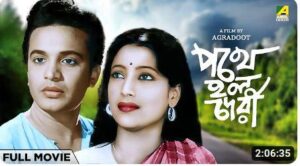
Pratyabortan,” wherein he portrayed a devoted servant, and his first bad function in “Kuhuk.”
1961 introduced Tapan Sinha’s “Jhinder Bandi,” a double function cult conventional, and the movie “Saptapadi,” which he produced, prevailing the national Award and his 2d BFJA great Actor award. The subsequent years continued with films like “Bipasha,” “Shiulibari,” and the musical “Deya Neya.”
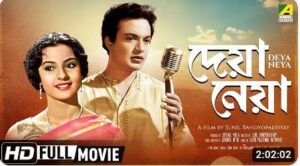
His 1963 contributions blanketed “Uttarayan,” “Surya Sikha” with Supriya Devi, the thriller “Sesh Anka” as a assassin, and the produced “Branti Bilash,” presenting a dual position. In 1964, he produced “Jatugriha,” every other country wide Award winner, and worked in “Lal Pathore.” the enduring crime mystery “Thana Theke Aschi” showcased his role as a Police Investigator in 1965.
Uttam Kumar’s adventure through the Nineteen Sixties solidified his reputation as the maximum a success superstar in Bengali cinema.
Beat Ten Movie of Uttam Kumar
1. Saptapadi (1961)
2. Deya Neya (1963)
3. Jiban Mrityu (1967)
4. Bandie (1978)
5 Chowringhee …
6. Sharey Chuattar (1953)
7. Pathey Holo Deri (1957) N
8. Kar Papey (1952)
9. Shipli (1977)
10.Sagorika (1976)
Collaboration with Satyajit Ray
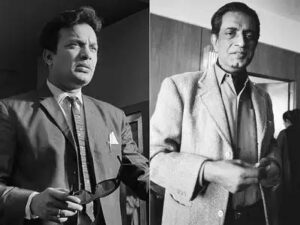
Satyajit Ray to begin with approached Kumar for his 1956 script, “Ghare Baire,” providing him the role of Sandip. But, Kumar declined, suggesting the component might be better acceptable for a longtime actor. Ray in the end finished the film in 1984, casting Soumitra Chatterjee for the position.
Their first collaboration took place in 1966 with the movie “Nayak,” premiering at Indira Cinema. A super incident occurred throughout the most desirable; a big crowd amassed, resulting in the frenzy of the public tearing Kumar’s shirts. For his role in “Nayak,” Kumar received his third BFJA Award for best Actor and attended the Berlin film competition. Impressed through his performance, actress Elizabeth Taylor expressed a preference to paintings and meet with him.
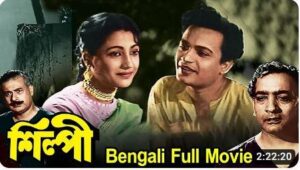
In 1967, Kumar collaborated with Ray all over again in “Chiriyakhana,” turning into the first actor to portray the enduring Bengali detective Byomkesh Bakshi. He received the first-ever national film Award for exceptional Actor in 1968 for his performances in “Chiriyakhana” and “Antony.”
National Award and extraordinary works (1966 – 1975)
In 1966, Kumar showcased his musical expertise by way of composing for “Kal Tumi Aleya,” proposing tunes sung by means of Hemanta Kumar and Asha Bhosle. He made his directorial debut with “Sudhu Ekti Bochor” and additionally seemed in movies like “Rajdrohi” and the romantic “Shankhyabela.”
1967 noticed Kumar’s excellent work within the iconic biographical film “Anthony Firingee,” primarily based on Portuguese people Poet Hensman Anthony’s life. His portrayal earned him the national Award for fine Actor, a first for an Indian actor. In the course of this era, he additionally contributed to movies like “Jiban Mrityu,” “Nayika Sangbad,” “Grihadaha” (prevailing his fourth BFJA high-quality Actor Award), and “Chiriyakhana,” marking a focus on character performing.
In 1968, he featured within the cult classic “Chowrangee,” at the side of “Kokhono Megh” and “Tin Adhyay.” the subsequent 12 months covered movies inclusive of “Mon Niye,” “Kamallata,” “Aparichito,” and “Sabarmati.” In 1970, he labored on “Nishi Padma” and “Kalankita Nayak.”
1971 introduced Kumar’s iconic comedies “Dhanni Meye” and “Chhadmabeshi,” along side “Jiban Jiggasa” and “Ekhane Pinjar.” The latter earned him his fifth BFJA fine Actor Award.

In 1972, Kumar starred in two films, “Stree” and “Memsaheb,” prevailing his sixth BFJA fine Actor Award for “Stree.” In 1973, he labored at the hit “Roudra Chaya” and directed “Bon Palashir Padaboli.”
1974 marked a large milestone with the double-model (Bengali, Hindi) shade film “Amanush,” directed via Shakti Samanta. Kumar’s stellar overall performance earned him his 7th BFJA high-quality Actor Award and his first Filmfare Award. The film set field office statistics, turning into a golden jubilee hit and the maximum a success movie of Kumar’s profession.
In 1975, Kumar persisted his fulfillment with hits like “Sanyashi Raja,” “Mouchak,” “Agnishwar,” and “Ami Se O Sakha.” He additionally labored with Suchitra Sen for the ultimate time in “Priyo Bandhobi.” The same year, he played a villainous role in “Bagh Bondi Khela.”
Closing years 1976 – 1980s
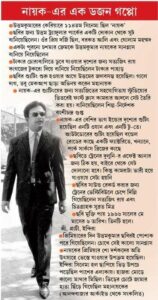
From 1976, Kumar’s career confronted a decline, notwithstanding hits like “Banhisikha” (1976), prevailing his eighth and remaining BFJA satisfactory Actor Award, a record at that time. In 1977, he starred in Shakti Samanta’s “Ananda Ashram.” The a hit “Dhanraj Tamang” (1978) earned him great Actor at Filmfare Award East. “Sunayani” (1979) was a hit, however many movies throughout this era experienced flops or common results.
In June 1980, “Dui Prithibi” marked a a success and severely acclaimed launch after a extended period. It become the remaining film launched for the duration of his lifetime.
Posthumously, “Ogo Badhu Sundori” (1981) have become a big field office achievement, running for 26 weeks. Later releases, “Kalankini Kankabati” (directed by way of Kumar) and “Protisodh,” have been additionally a hit. In 1982, the Hindi movie “Desh Premee,” featuring Kumar, accomplished achievement. His final launch in 1987, the Hindi movie “Mere Karam Mere Dharam,” featured him in a small position.
Personal Life
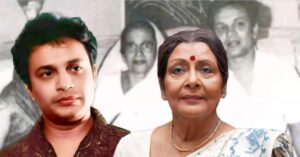
Uttam Kumar married Gauri Chatterjee (27 September 1929 – 21 April 1981) in 1948, and that they had a son named Gautam Chatterjee (7 September 1950 – 2 may 2005). Unfortunately, their marriage become afflicted.
Regardless of rumors suggesting a connection between Uttam Kumar and Suchitra, they were both married to other individuals and had families. Any hypothesis about their courting leading to Kumar’s divorce lacks fact. They maintained a respectful professional relationship as
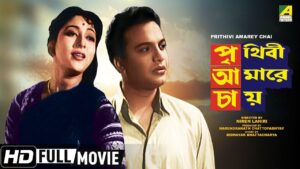
colleagues.
His grandson, Gourab Chatterjee, and his brother’s grandson, Sourav Banerjee, each pursued careers as actors.
In 1960-61, Kumar began his autobiography titled “Harano Dinguli Mor,” which remained incomplete. In 1979-80, he began another autobiography, “Aamar Ami,” which additionally remained incomplete due to his unexpected dying. Tarun Kumar later finished it, however the original manuscript turned into stolen on the day of Uttam’s loss of life. It became later recovered through a member of The instances OfIndia and published at the Kolkata book fair in 2010.
Illness and death

On 23 July 1980, at the same time as filming “Ogo Badhu Sundori,” Uttam Kumar fell critically unwell. Later that night, at a chum’s party, sensing a health disaster, he drove himself to Belle Vue health center, just a quick distance from his Moira road house. Admitted at three:00 am, a medical board of eminent cardiologists attended to him. Lamentably, he surpassed away at 9:35 inside the evening on Thursday, 24 July 1980, on the age of fifty three. His sudden dying prompted mourning among many in Kolkata.
The next day, 25 July, millions collected at the streets for his final rites, and the complete metropolis mourned. The Bengali each day newspaper Anandabazar Patrika carried reports on Uttam’s passing. The headline of 1 succinctly study: “Cholochitre Indrapatan,” translating to “Cinema Loses Its Titan.”
Awards and Recognition
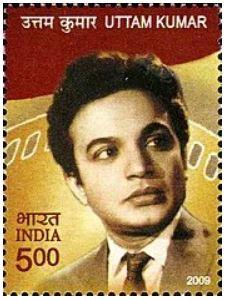
National Film Awards:
1. 1957:
o Certificate of Merit for Third Best Feature Film In Bengali – “Harano Sur” (As a producer)
2. 1961:
o Certificate of Merit for Second Best Feature Film in Bengali – “Saptapadi” (As a producer)
3. 1963:
o National Film Award for Best Feature Film in Bengali – “Uttar Falguni” (As a producer)
o National Film Award Third Best Feature Film In Bengali – “Jatugriha” (As a producer)
4. 1967:
o National Award for Best Actor – “Antony Firingee,” “Chiriyakhana”
Bengal Film Journalists Association (BFJA) Awards:
1. 1955:
o BFJA Award for Best Actor – “Hrad”
2. 1962:
o BFJA Award for Best Actor – “Saptapadi”
3. 1967:
o BFJA Award for Best Actor – “Nayak”
4. 1968:
o BFJA Award for Best Actor – “Grihadaha”
5. 1972:
o BFJA Award for Best Actor – “Ekhane Pinjar”
6. 1973:
o BFJA Award for Best Actor – “Stree”
7. 1975:
o BFJA Award for Best Actor – “Amanush”
8. 1976:
o BFJA Award for Best Actor – “Banhisikha”
These awards reflect his consistent excellence and significant contributions to Bengali cinema over the years.
In the Filmfare Award East category:
• In 1975, he won the Best Actor Award for “Amanush.”
• In 1978, he received the Best Actor Award for “Dhanraj Tamang.”
Uttam Kumar: “Mahanayak” of Bengali cinema, versatile actor, enduring cinematic legacy.
Read More :“Suchitra Sen”
Read More “Shakib Khan“
Read More “Sridevi“
Read More “Madhuri Dixit“
Reference : www.biographiess.com







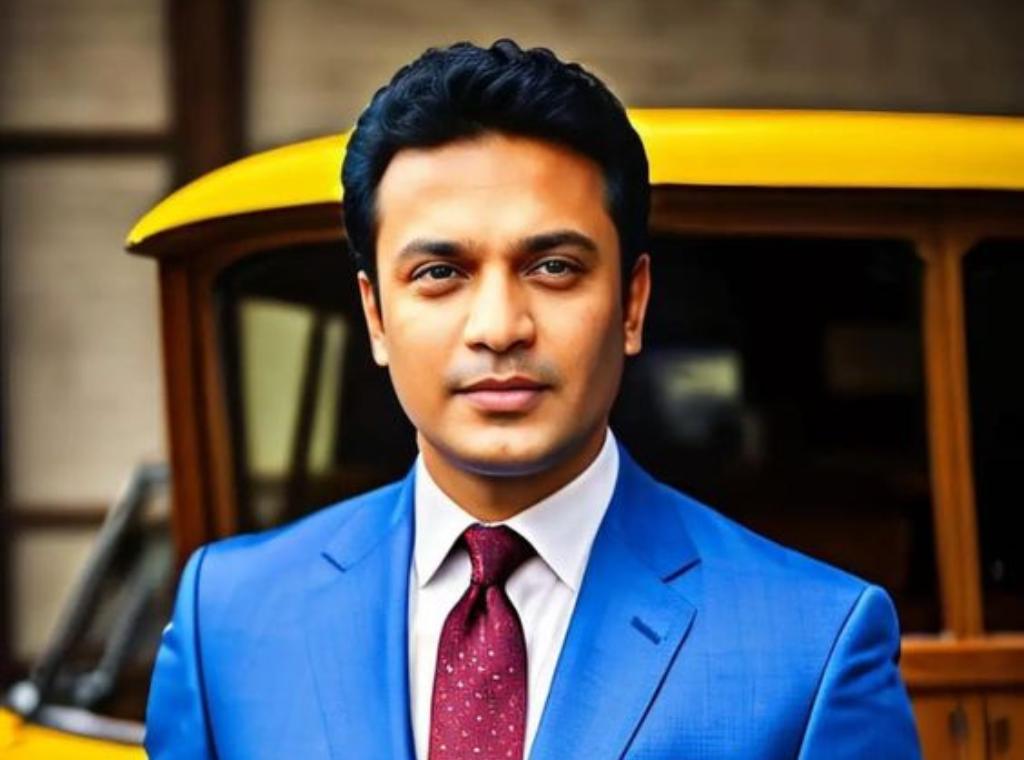




Films capture history, shaping culture; narratives unfold, reflecting societal changes, influencing perspectives. ..Moyanayoke..!!!